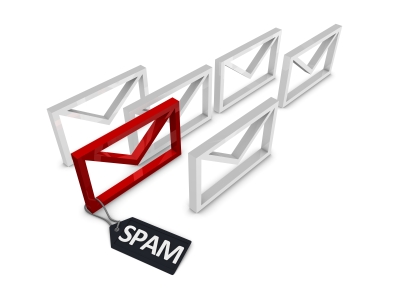Email Content Filtering
 There is more to email than just having great content, the perfect subject line, and having a perfect layout. What about spam filters? When it comes to your email being filtered, the Return Path Sender Reputation Report identified the following key factors ISPs consider: IP Reputation, Infrastructure and Content.
There is more to email than just having great content, the perfect subject line, and having a perfect layout. What about spam filters? When it comes to your email being filtered, the Return Path Sender Reputation Report identified the following key factors ISPs consider: IP Reputation, Infrastructure and Content.
Here is what Tonya Mitchell Consultant, Deliverability Consulting at Return Path Sender had to say about it:
Filters “learn” information over time based on the spammy versus legitimate mail it has seen come through its system. They also consider the feedback from the end users regarding whether or not messages have been marked as spam. So while content filtering may only come into play 17% of the time, it’s still valuable to understand the various types of spam filters where your message could get caught.
There are three major levels of enterprise spam filtering: hosted, gateway and desktop. Hosted spam filters are companies that have developed a proprietary method of using content and reputation metrics to identify spam versus legitimate mail. Since these spam filters have a large book of clients using their service, they have a broader scope of information to use in their decision making process to determine whether to deliver to the inbox, spam or quarantine folder, or to block it completely. Hosted spam filters can include technology that is integrated by vendors directly into their own products. Examples of hosted spam filters include Brightmail, Cloudmark, MessageLabs, and Postini. According to Return Path Sender’s latest benchmark report, these hosted spam filters only delivered email to the inbox 86% of the time. Some of these hosted spam filters are more difficult than others to pass through. Postini is the most challenging filter with only 47.55% of emails being delivered as you can see in the table below.
| Filter | Inbox | Spam | Missing |
| Mailtrust | 82.02 | 16.76 | 1.23 |
| MessageLabs | 85.02 | 14.34 | 0.63 |
| Postini | 47.55 | 52.23 | 0.22 |
| Brightmail | 98.36 | 1.29 | 0.35 |
Gateway spam filters are physical servers with software that are installed at the border of a company’s network. All mail attempting to come into your company must pass through this “gate” before it can enter your system. This spam filter is learning what it deems as spam based on all the email coming into your company, thus having less email to learn from than the hosted spam filter. Examples of a gateway spam filter include IronPort and Barracuda.
The desktop spam filter lives on the end users computer. It is highly customizable by the individual so is often seen as one of the more difficult filters to pass through. An example of a desktop spam filter is Outlook. Outlook uses Microsoft’s anti-spam filter SmartScreen, which also looks at reputation, to help filter email. SmartScreen uses the feedback from Windows Live Hotmail users to help distinguish legitimate emails from spam.
While the triggers for each content spam filter can vary, the following are some best practices to help reduce your chances of getting caught in the various content spam filters:
Rule Out Reputation. Most of the filters mentioned above also measure IP reputation. You should first verify that your issues aren’t due to IP reputation first before testing content:
Return Path Sender Score: http://www.senderscore.org
Brightmail: http://ipremoval.sms.symantec.com/lookup/
Microsoft SmartScreen: https://postmaster.live.com/snds/
Ironport: http://www.senderbase.org/
Barracuda: http://www.barracudacentral.org/lookups
Postini: http://www.google.com/postini/headeranalyzer/
Dealer Take Away
Test, test, test. Once you identify that your content is being flagged by spam filters, you should continue testing to isolate what is causing the issues, such as subject lines, URLs/links, text and images. Content testing can be a time consuming process as you’ll want to test the various message components separately until you identify what is passing and failing the spam filter. Also, check to see if any of your URLs are on URL blacklists, like URIBL and SURBL.
Have a balance between text and images in your message. Don’t create a message with one large image as this is a spammer technique used in attempt to bypass spam filters. Embedding large images in emails or using a lot of graphics can also slow the email servers’ ability to process mail. As a result, content spam filters will often flag such emails and stop delivery. Not to mention images are off by default at most ISPs so you won’t be getting your message across anyway.
Don’t use URL shorteners. A URL shortner is a tool that takes your full URL and creates a small version of it to place in content, like bit.ly and tinyurl for example. Since URL shorteners are commonly used by phishers and spammers, they are usually blocked by content spam filters.
Original blog posted here: http://blog.activengage.com/
© 2025 Created by DealerELITE.
Powered by
![]()

You need to be a member of DealerELITE.net to add comments!
Join DealerELITE.net